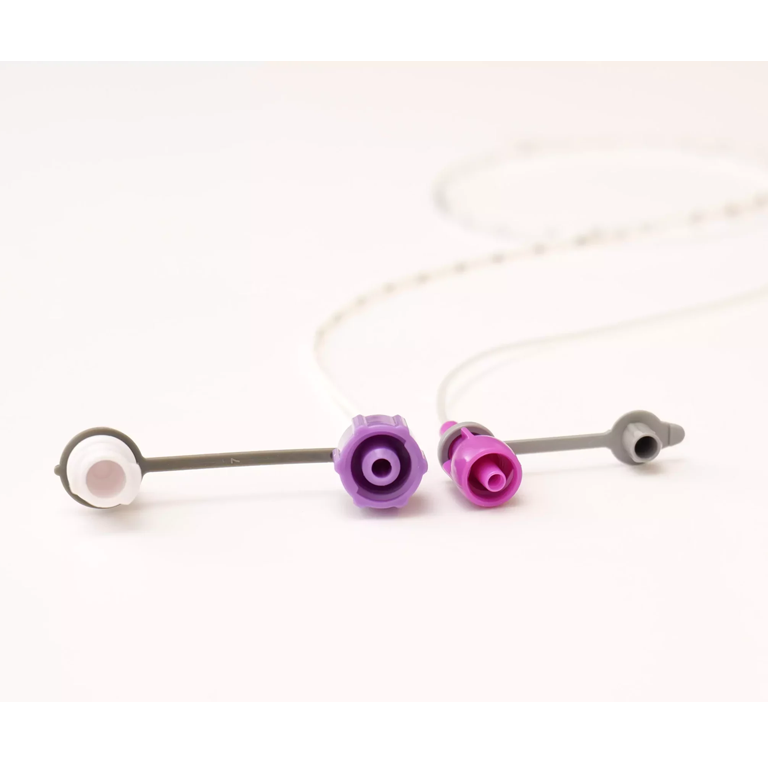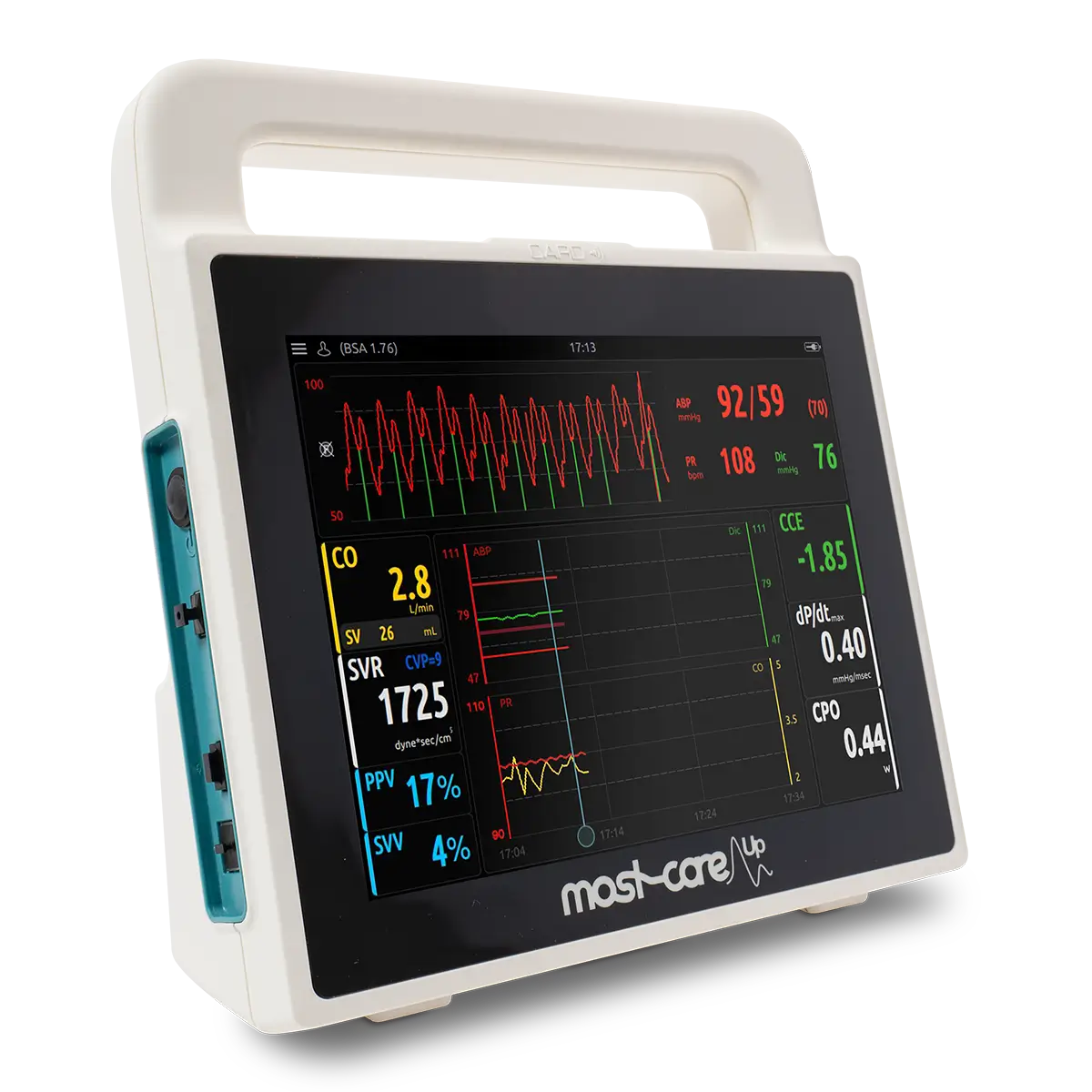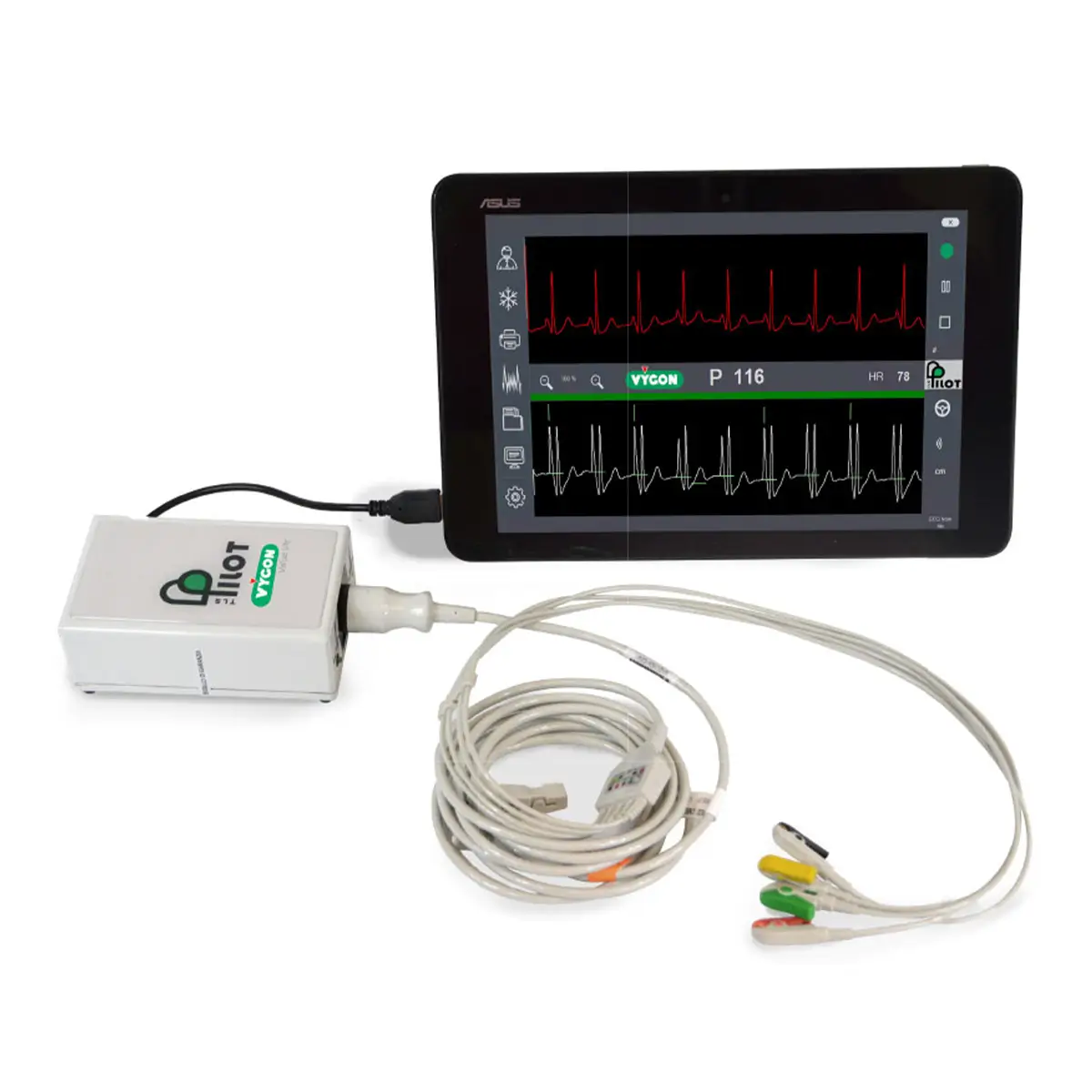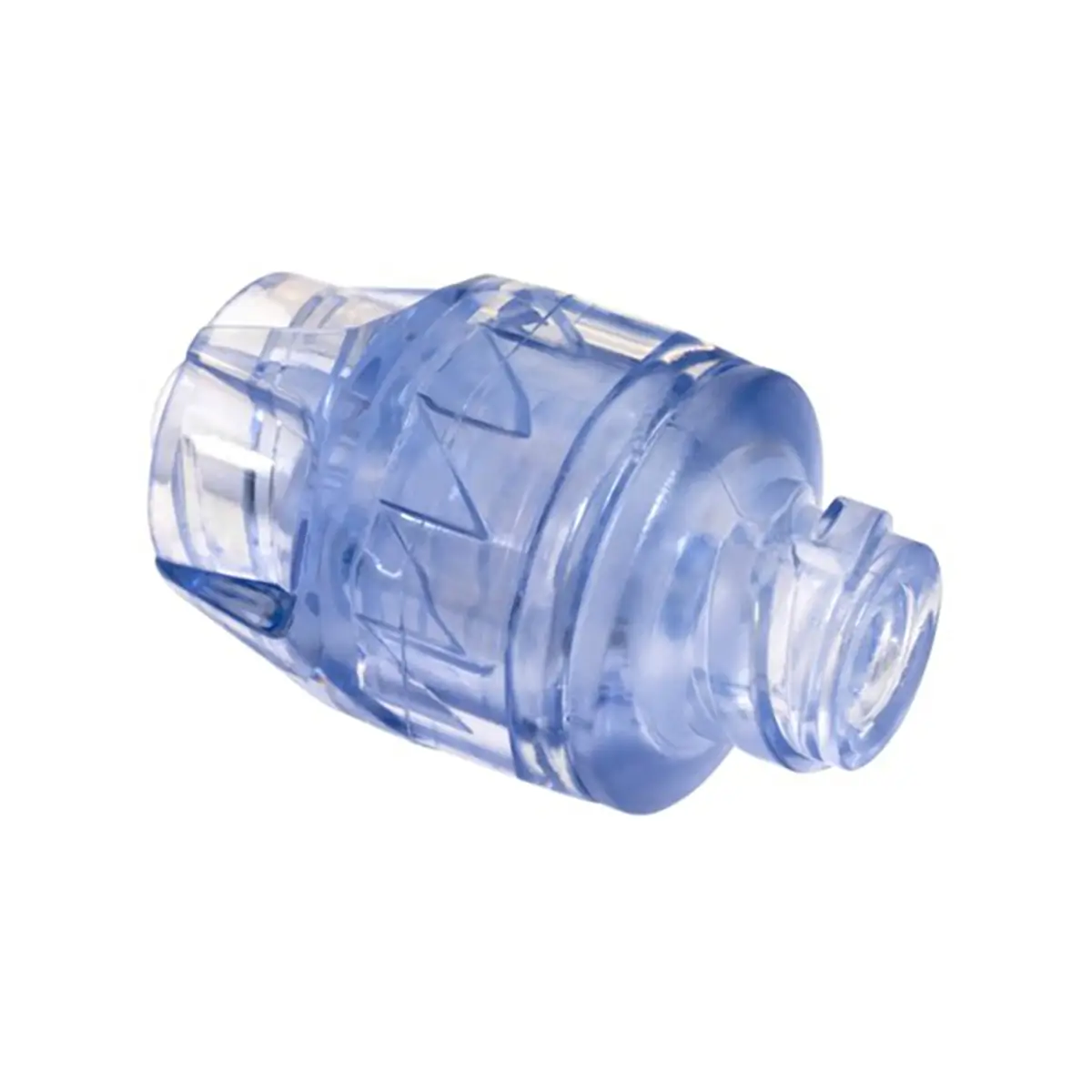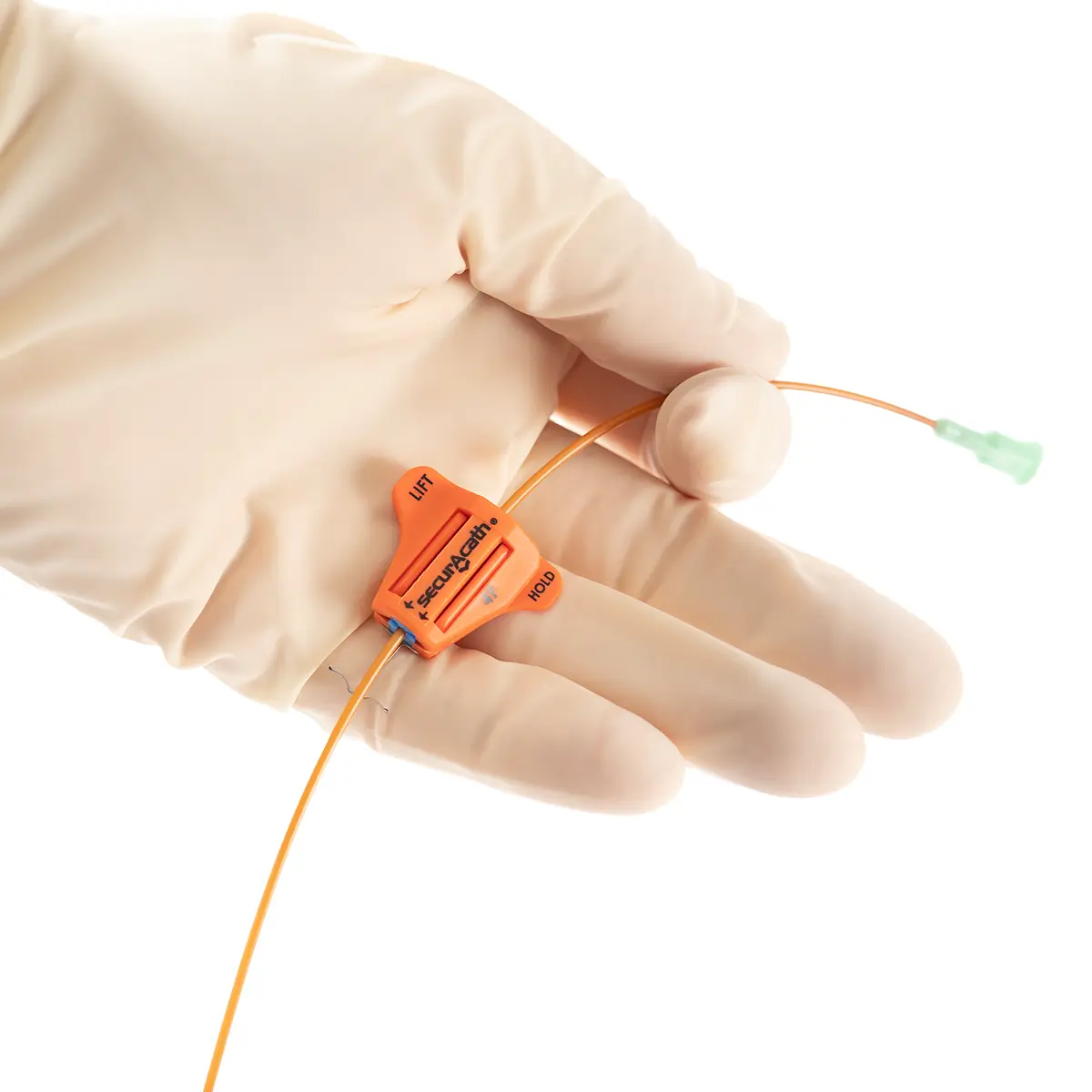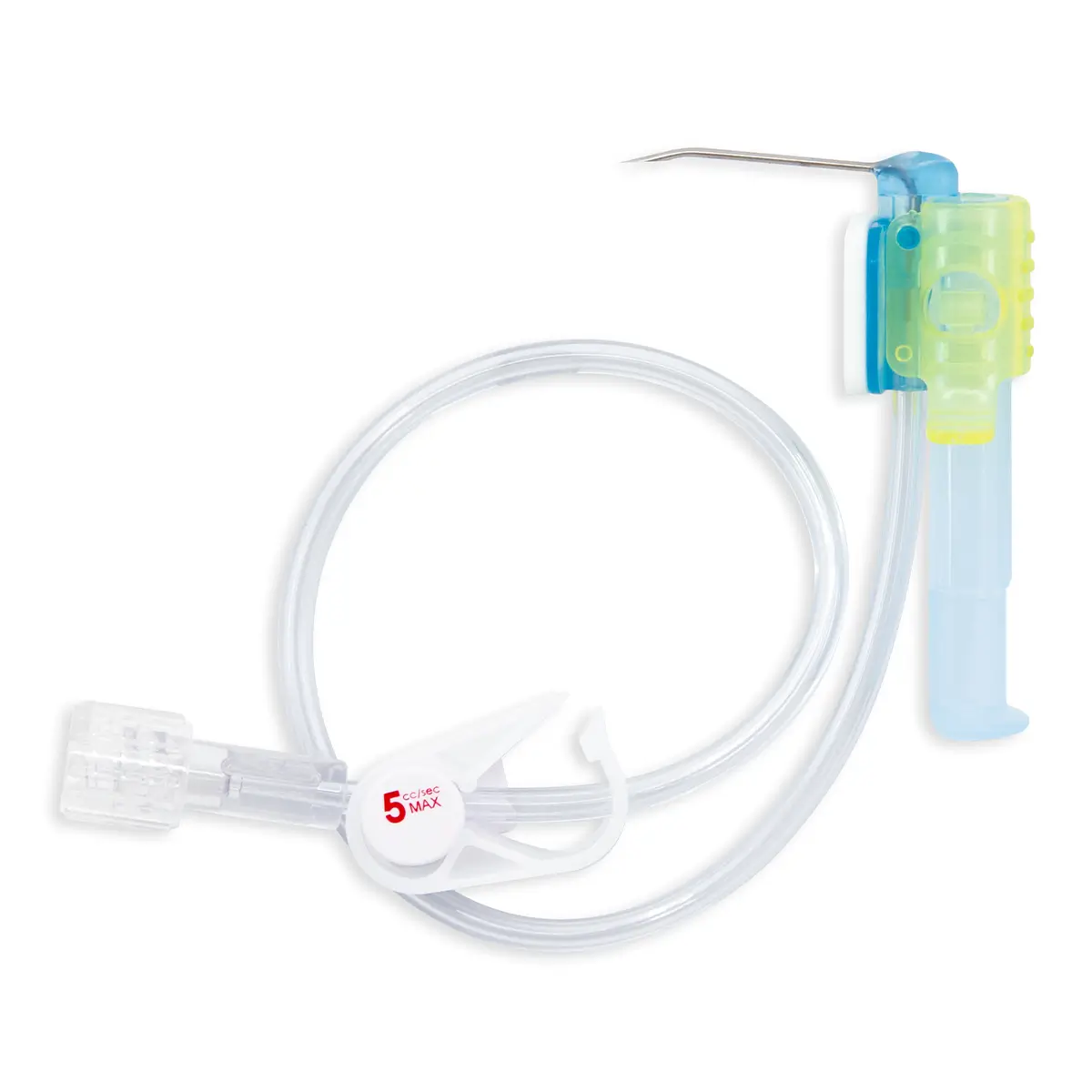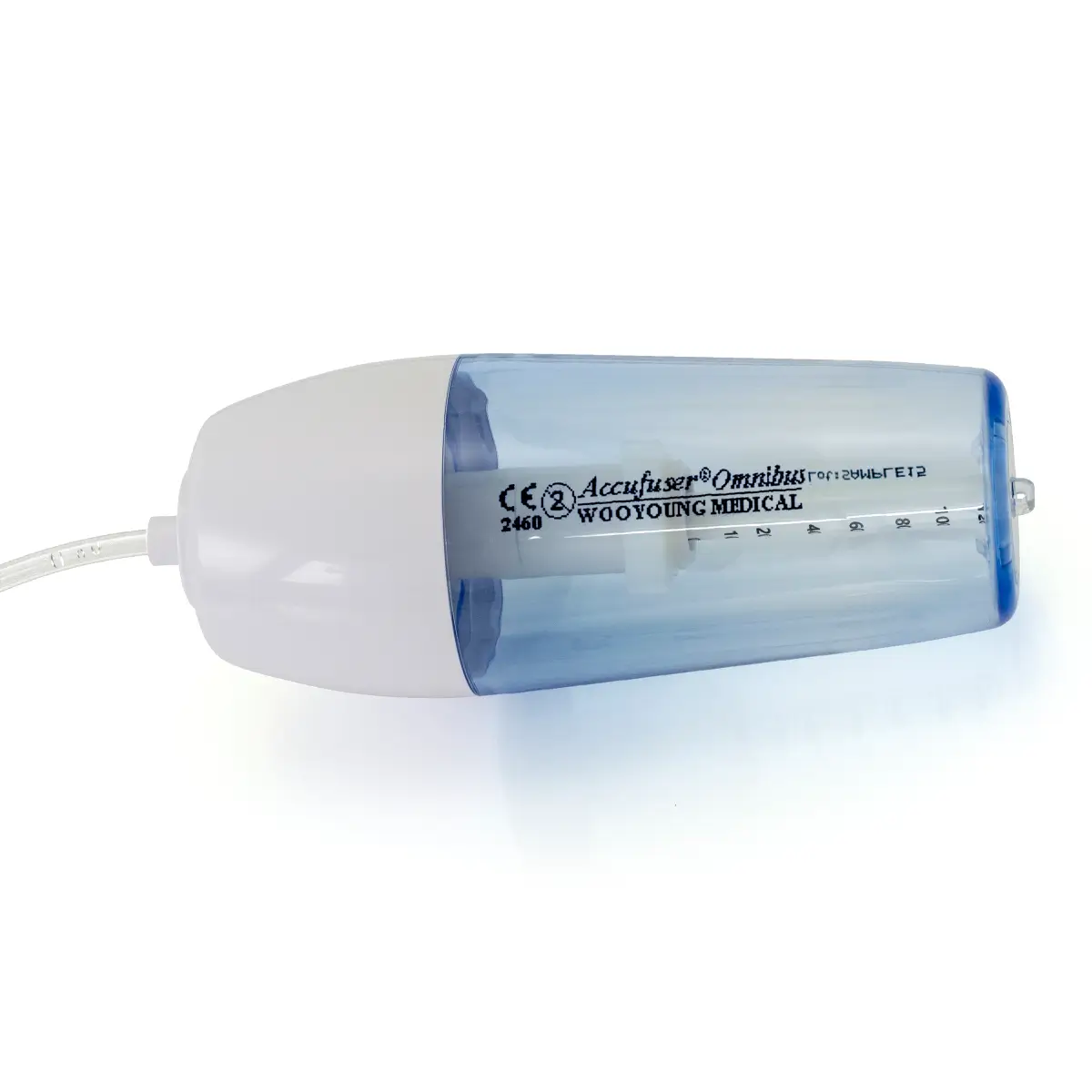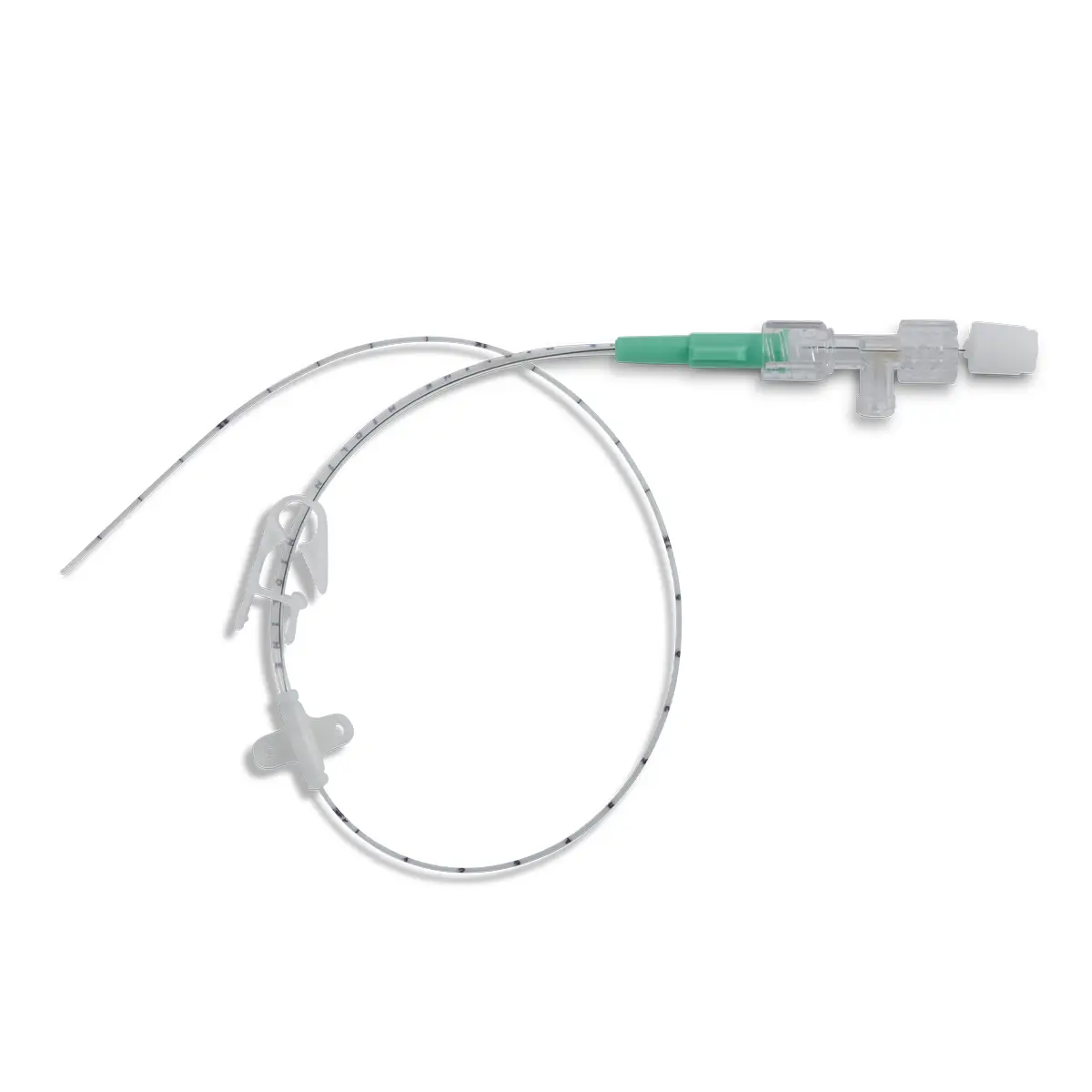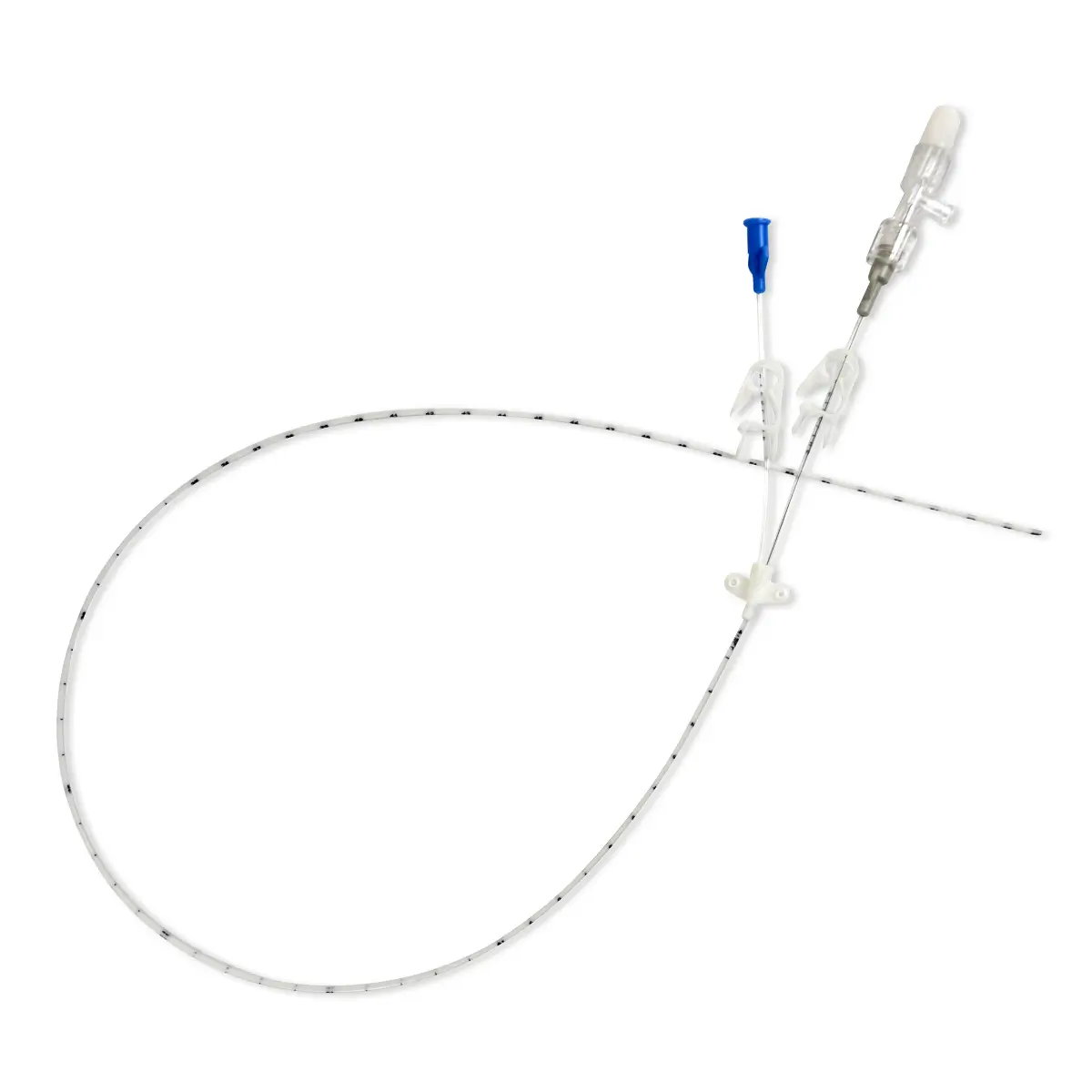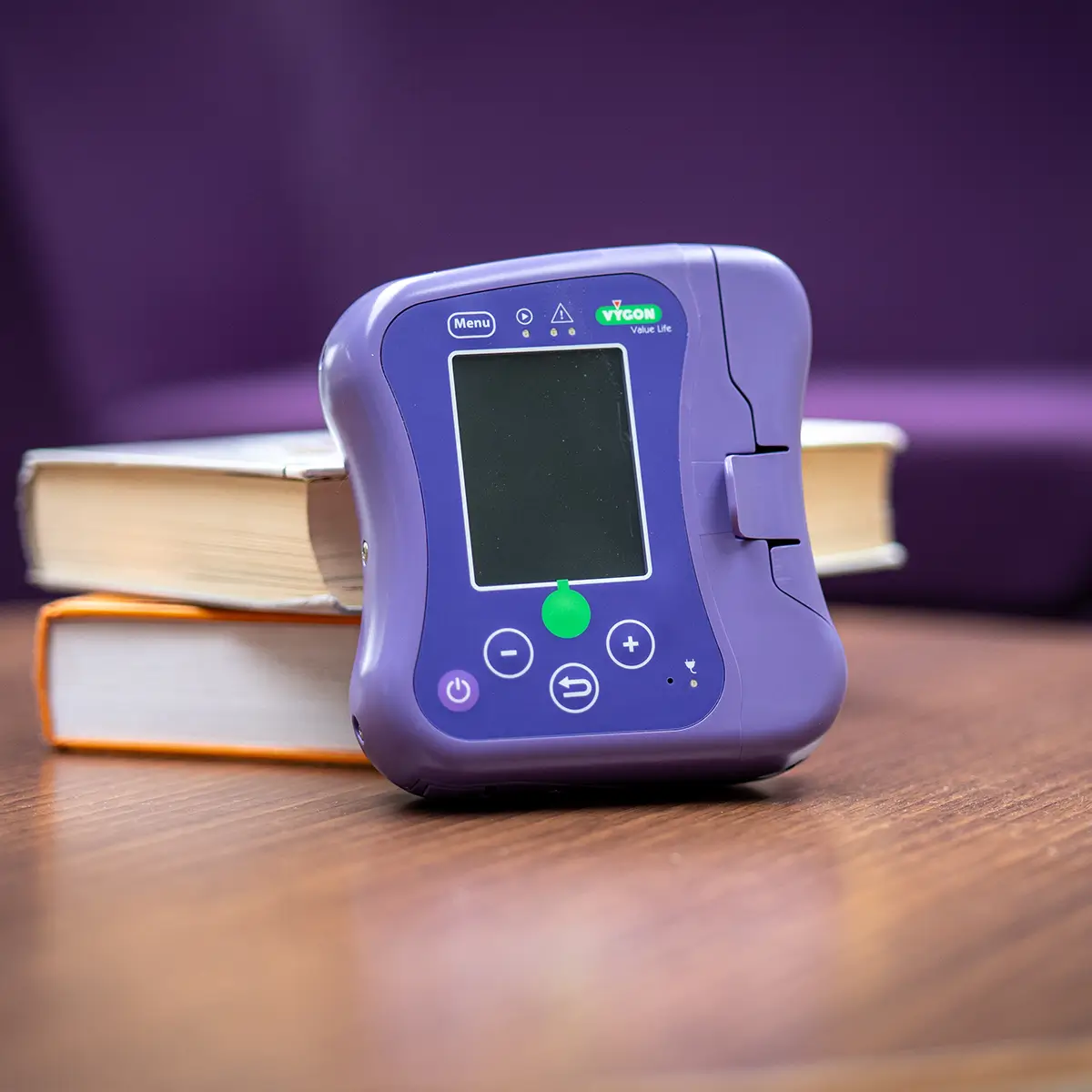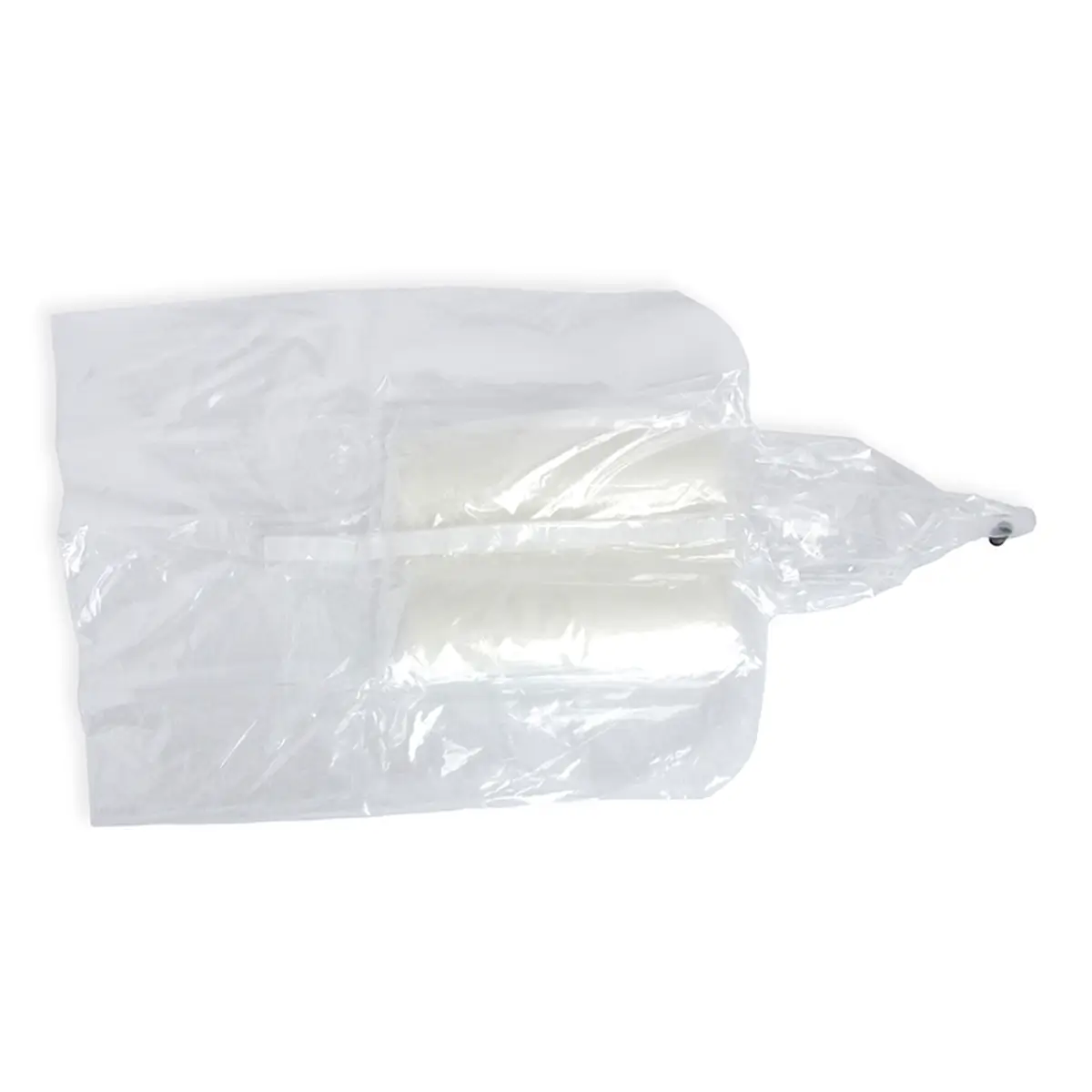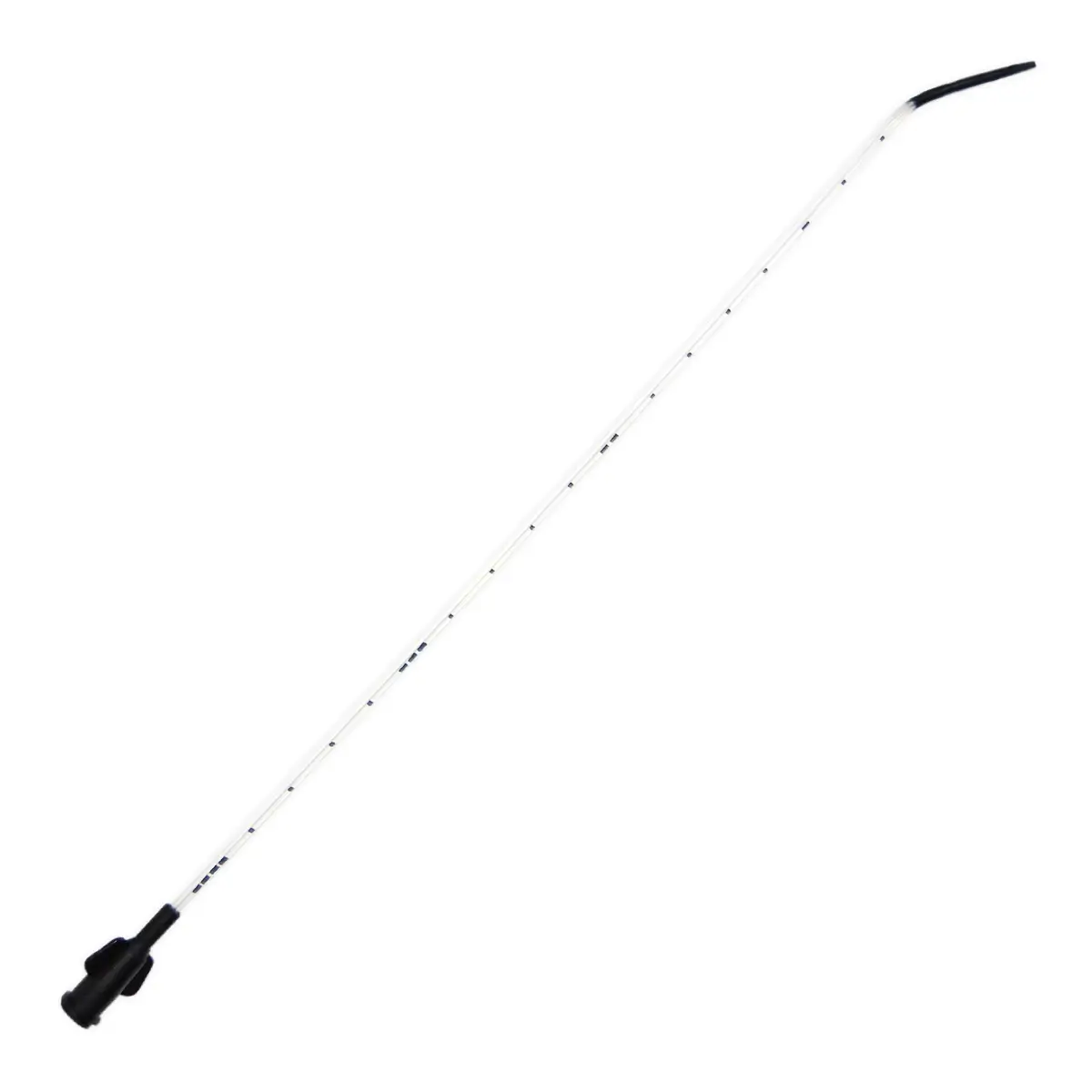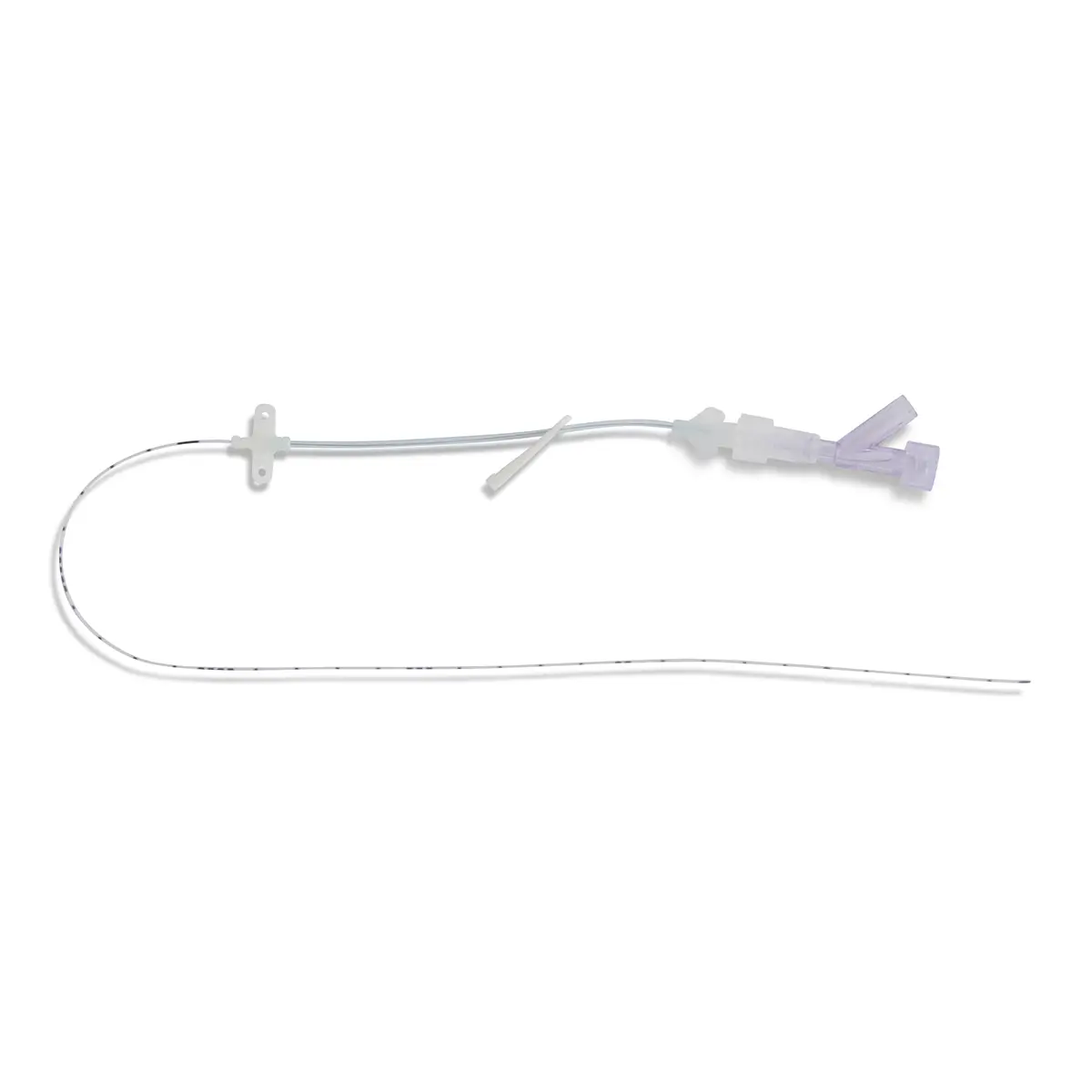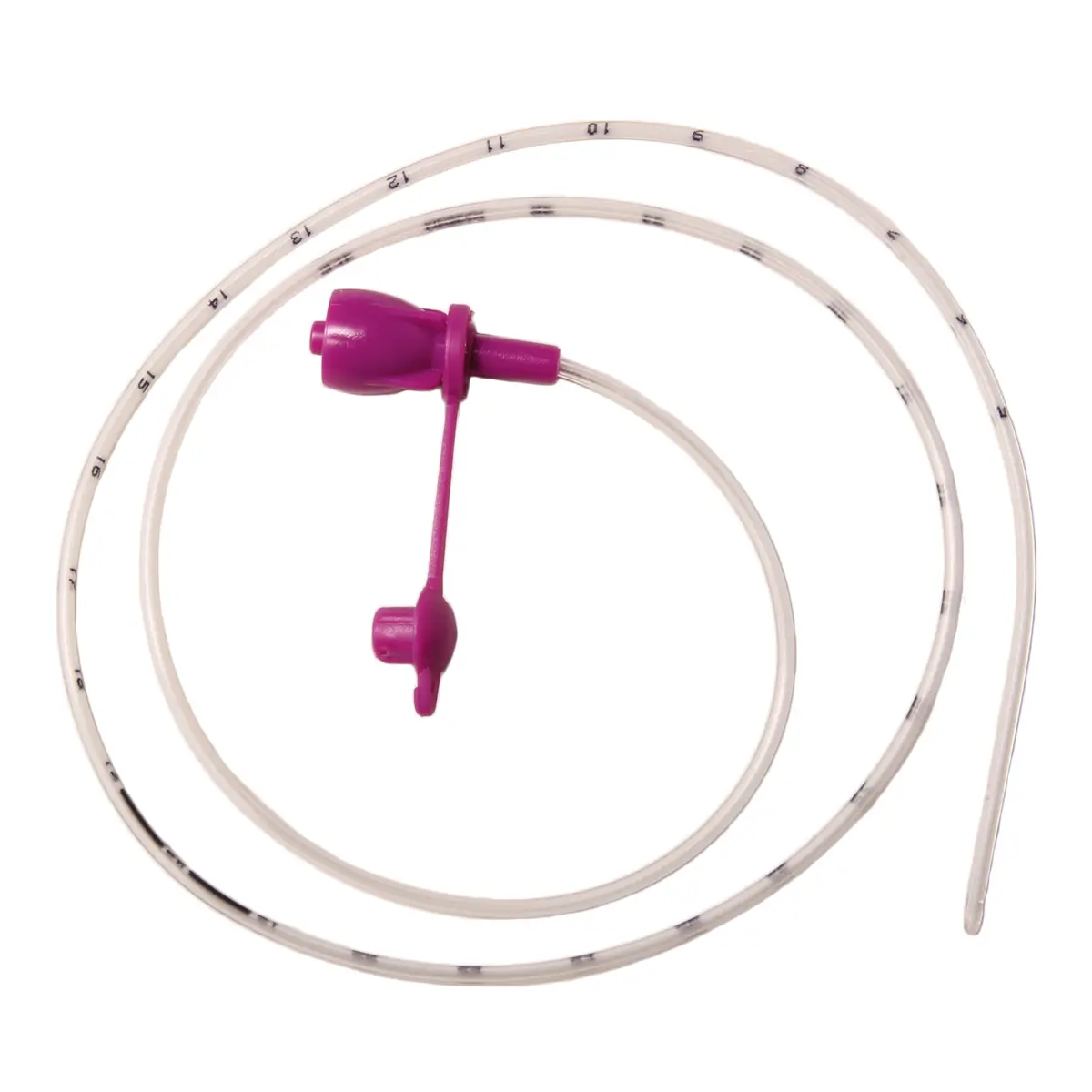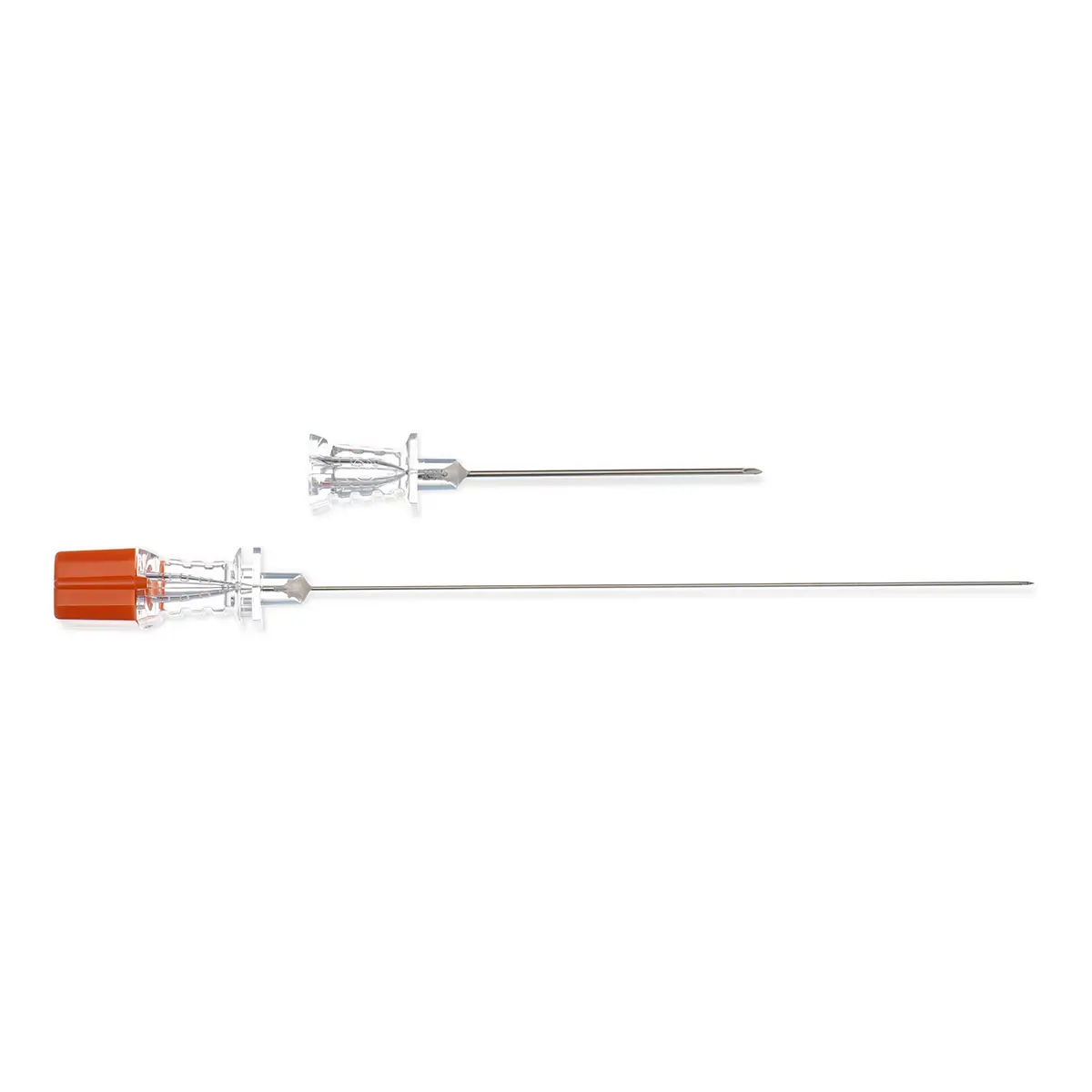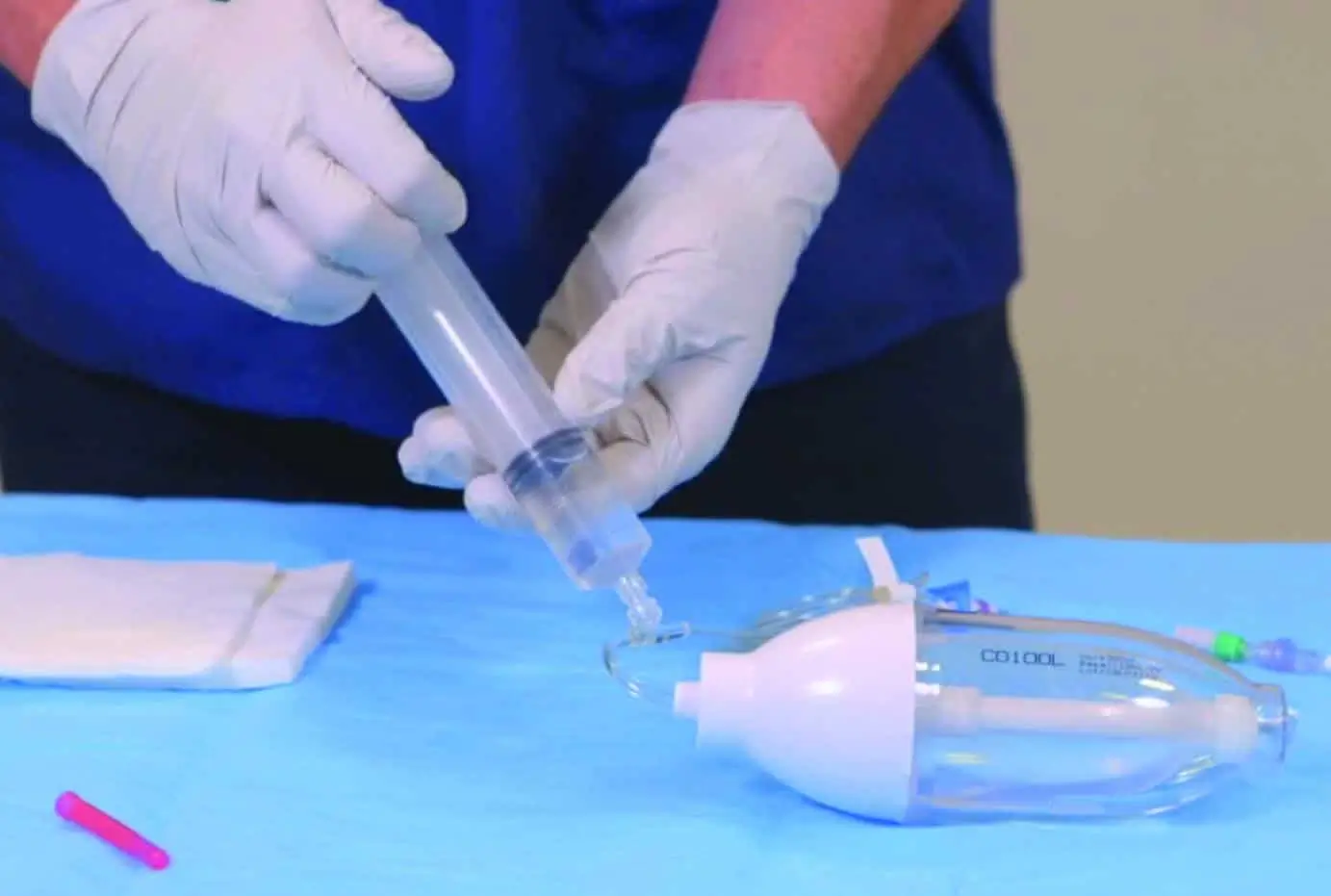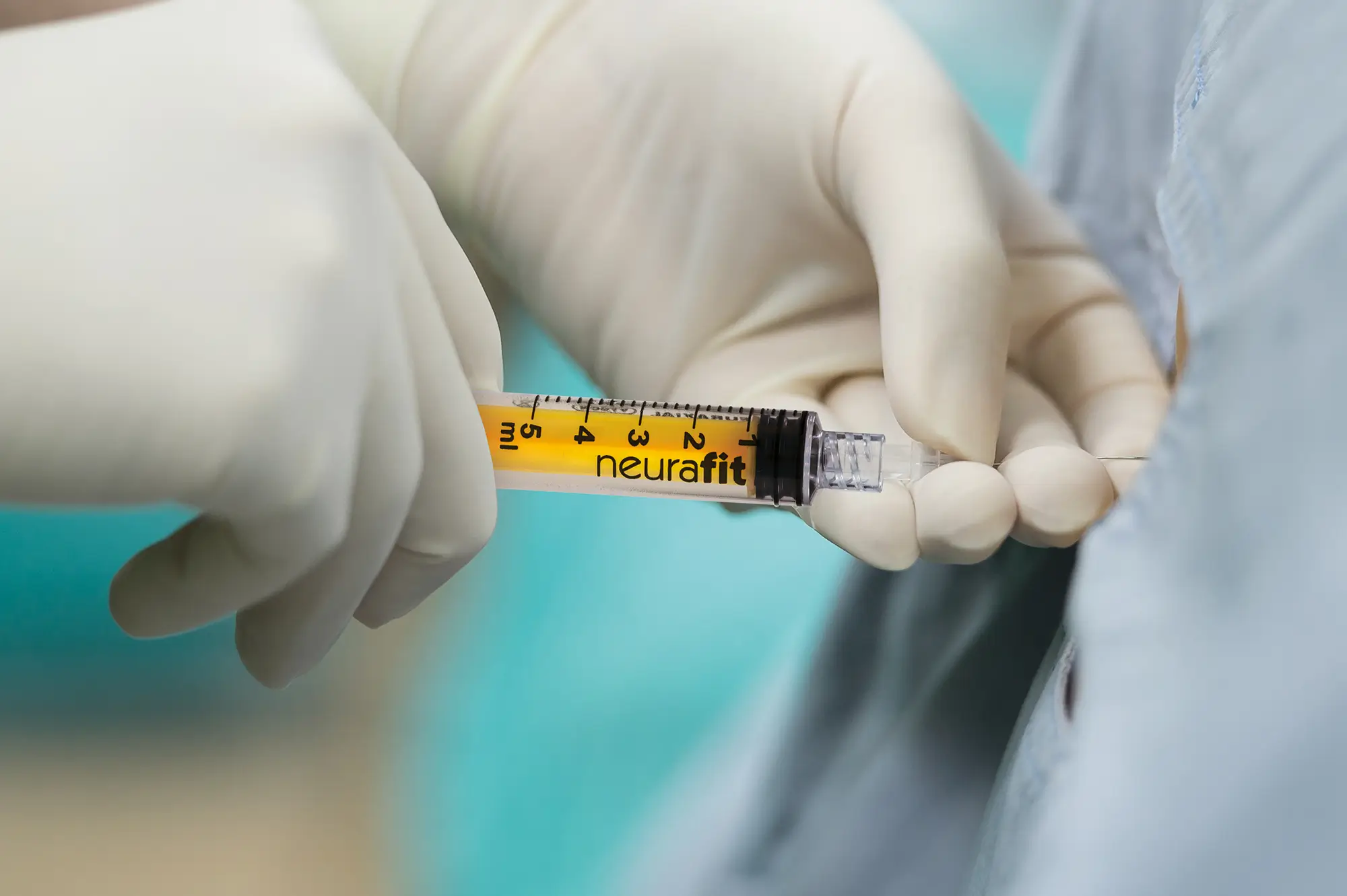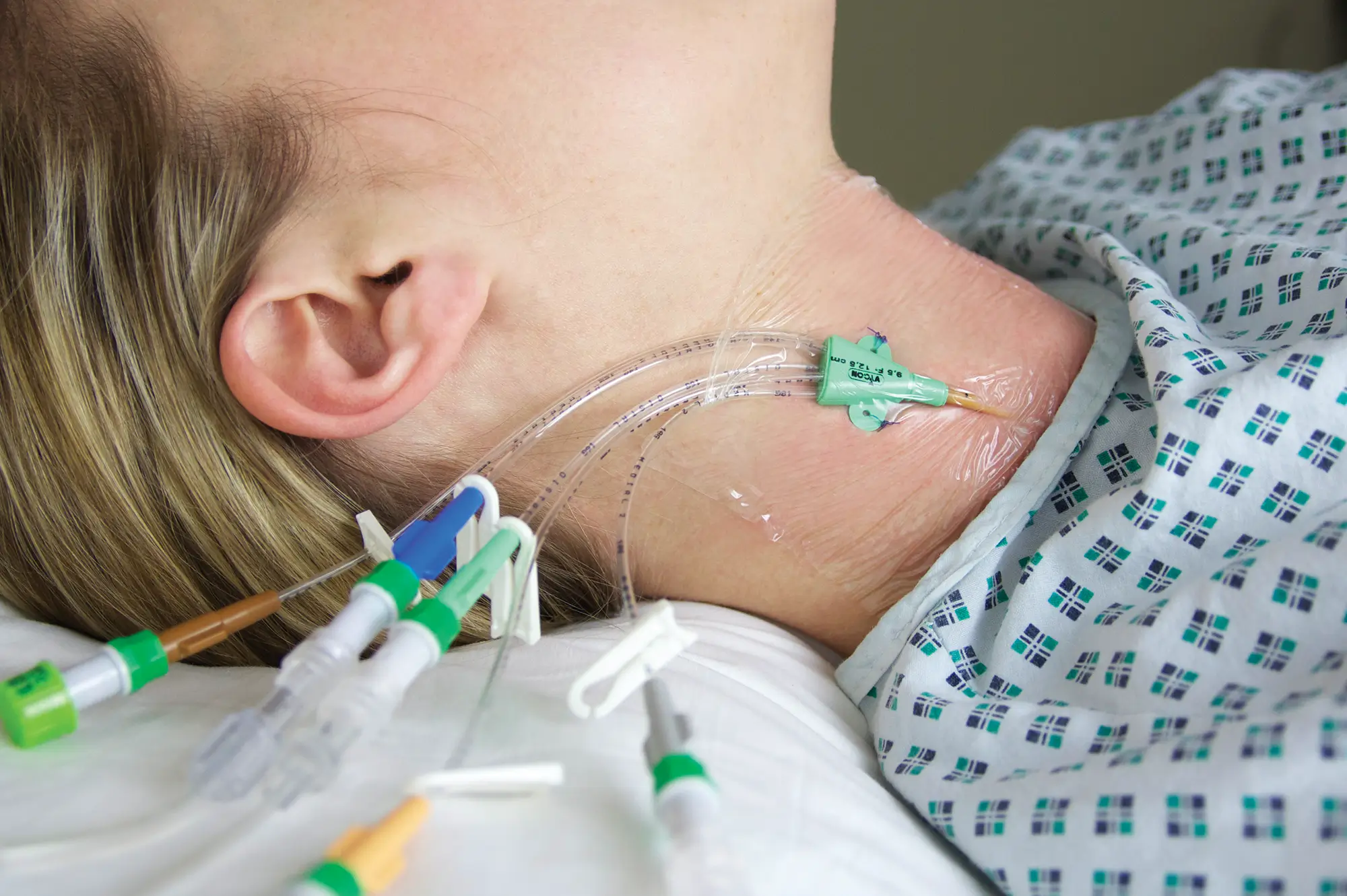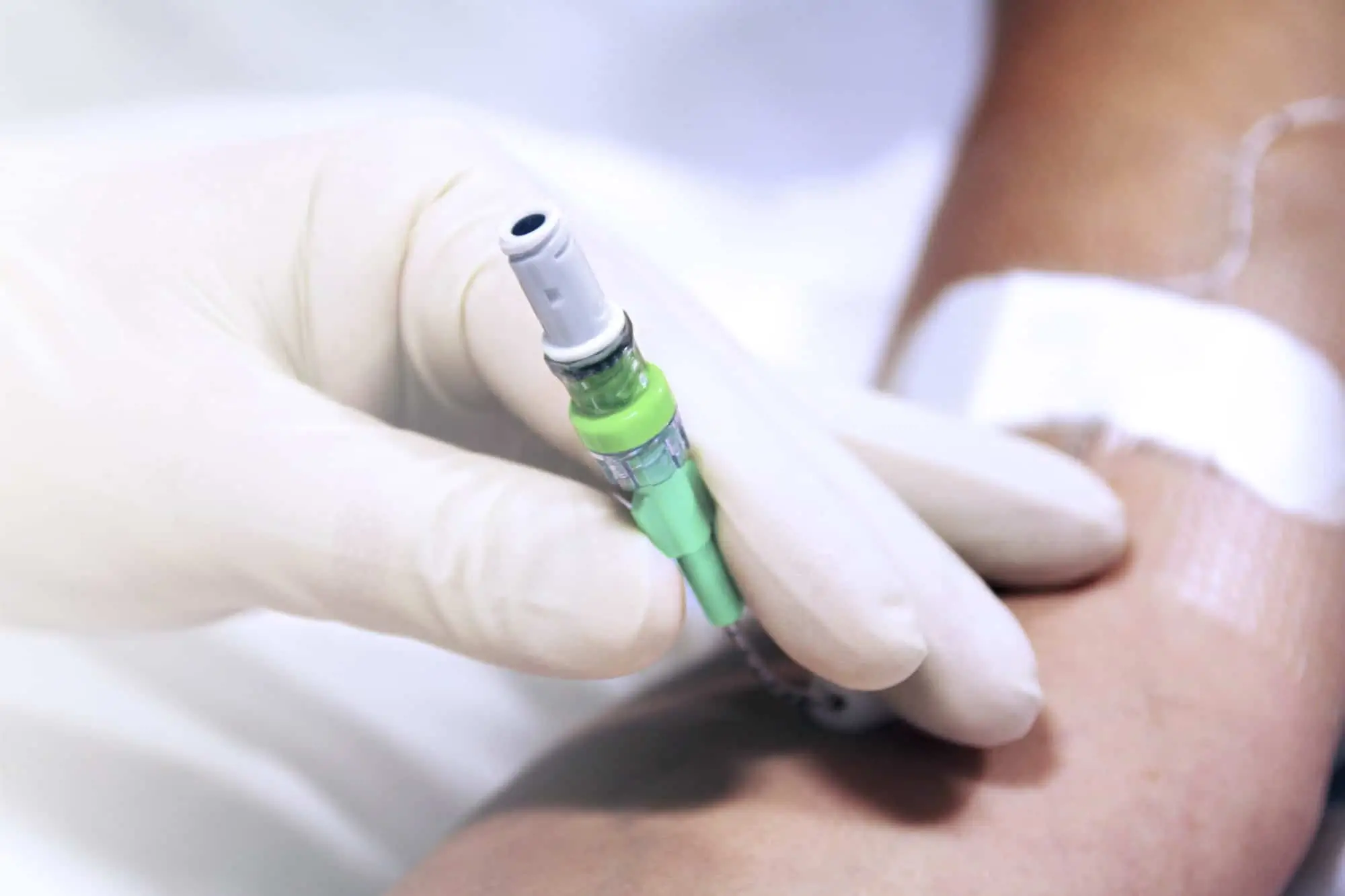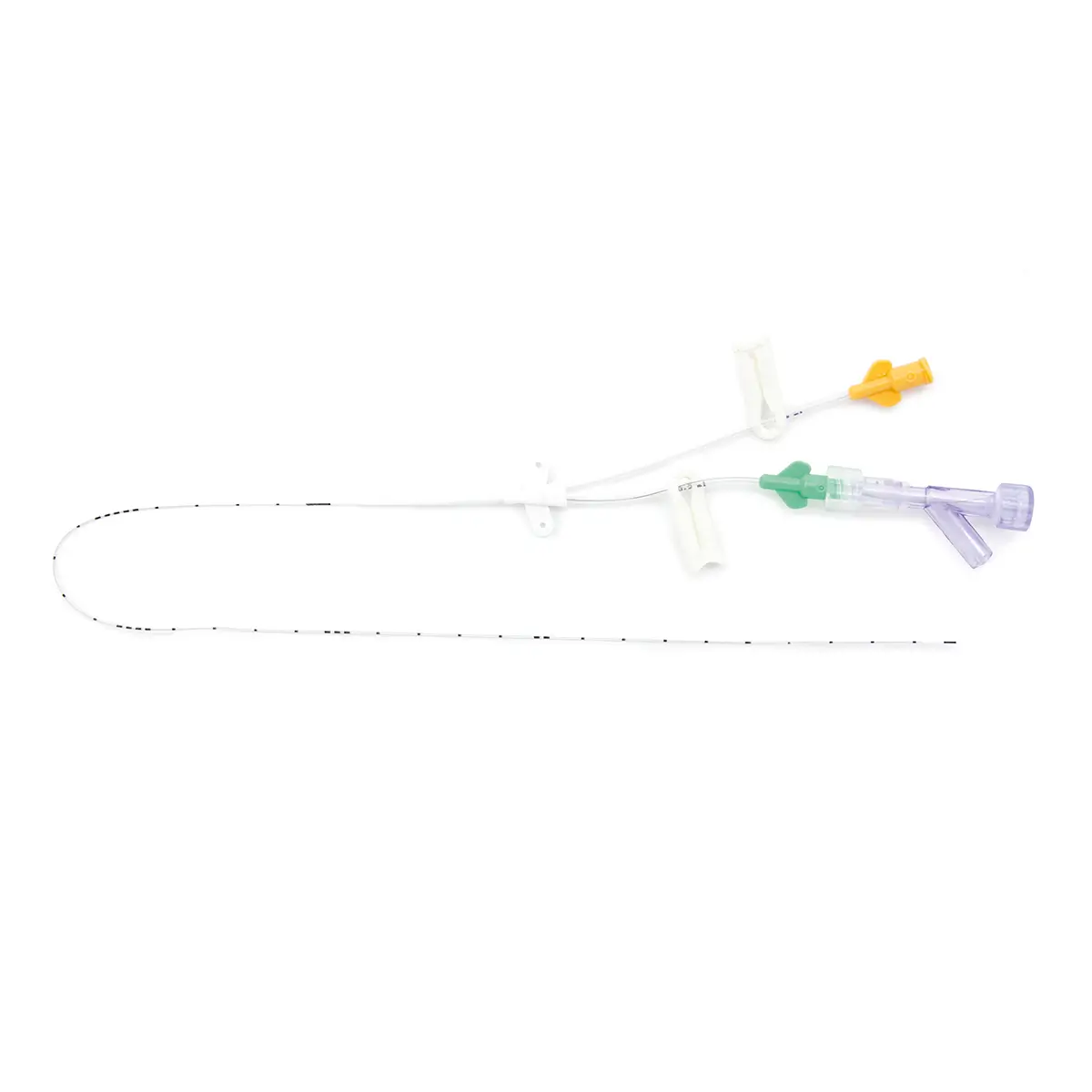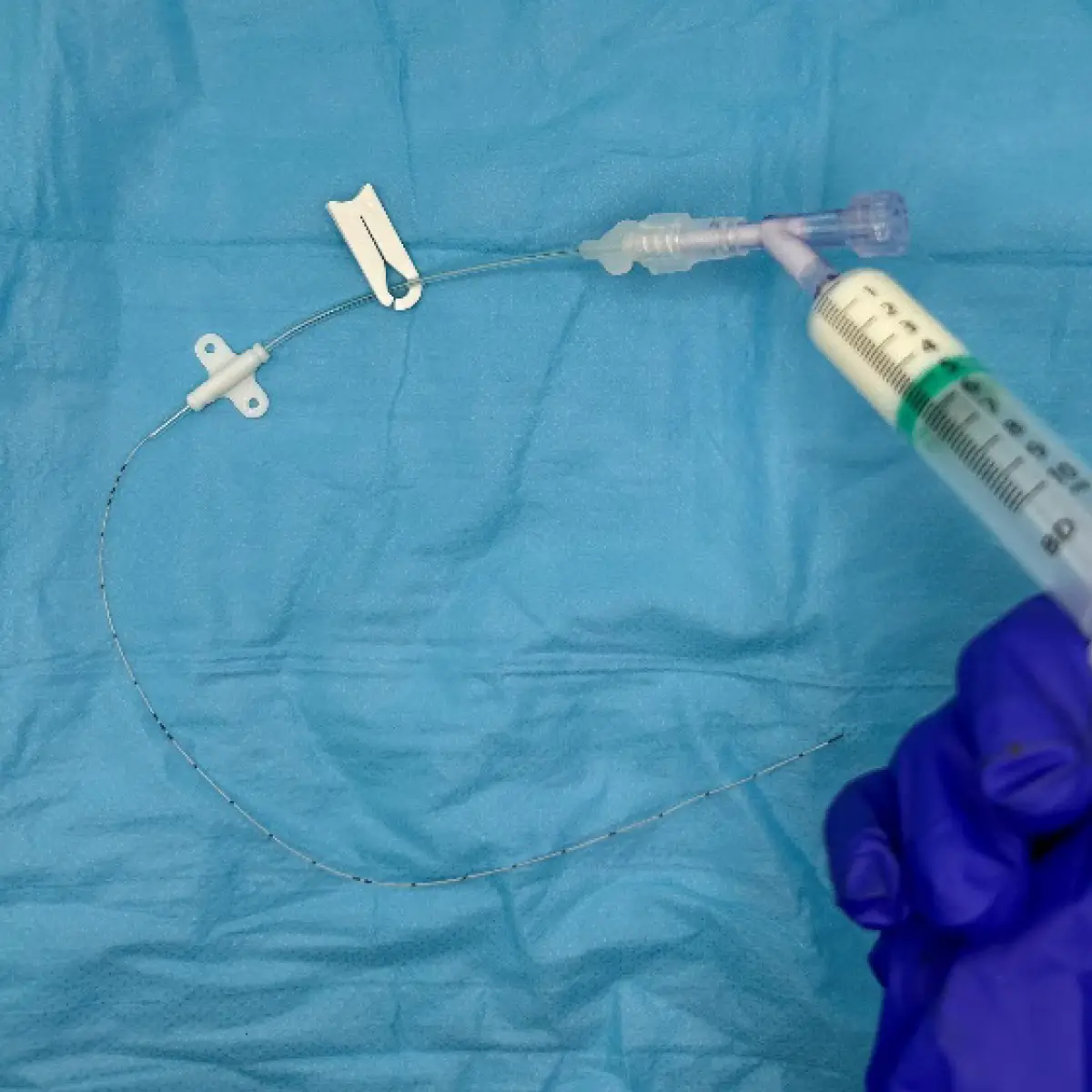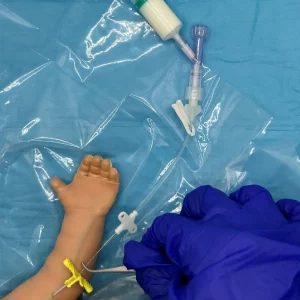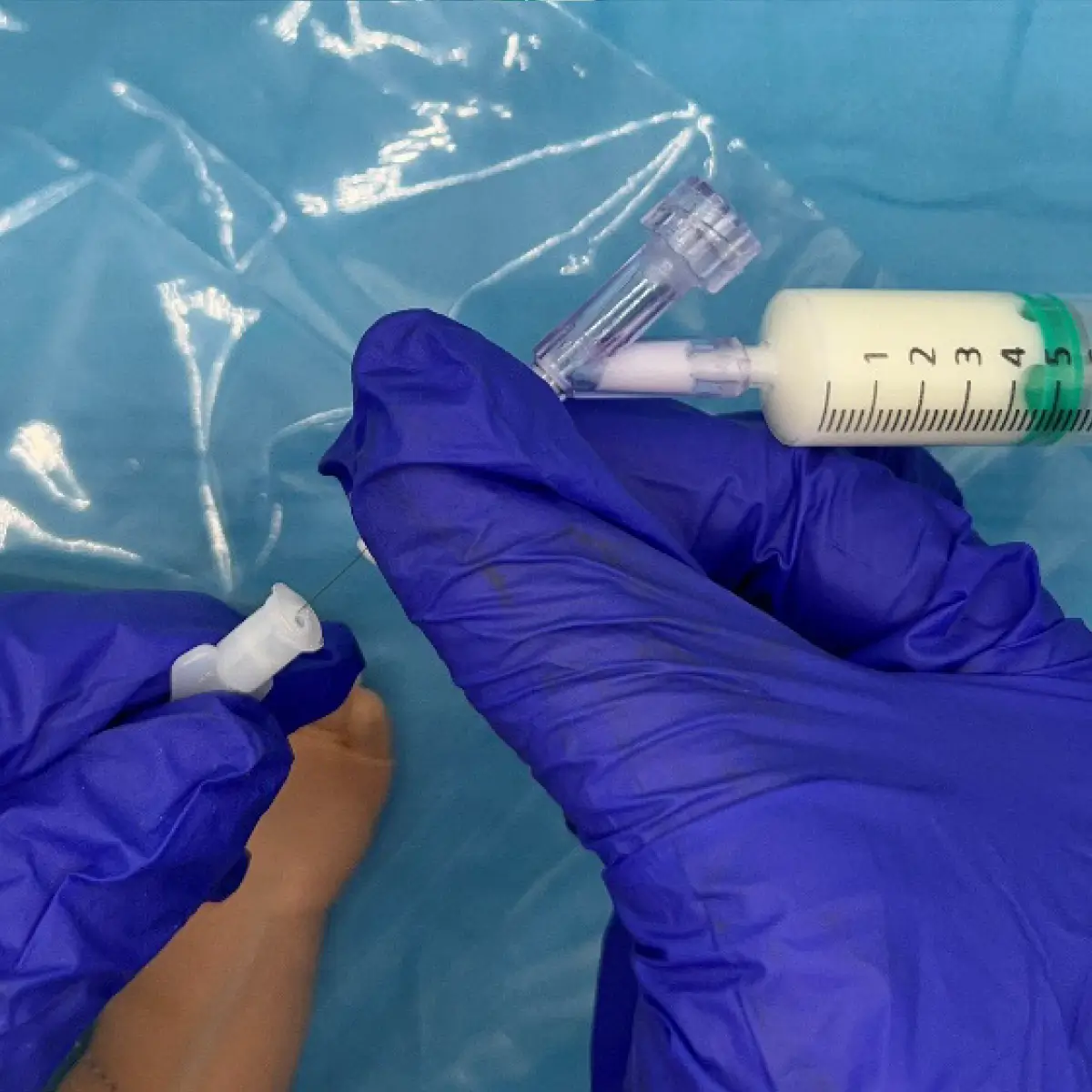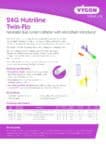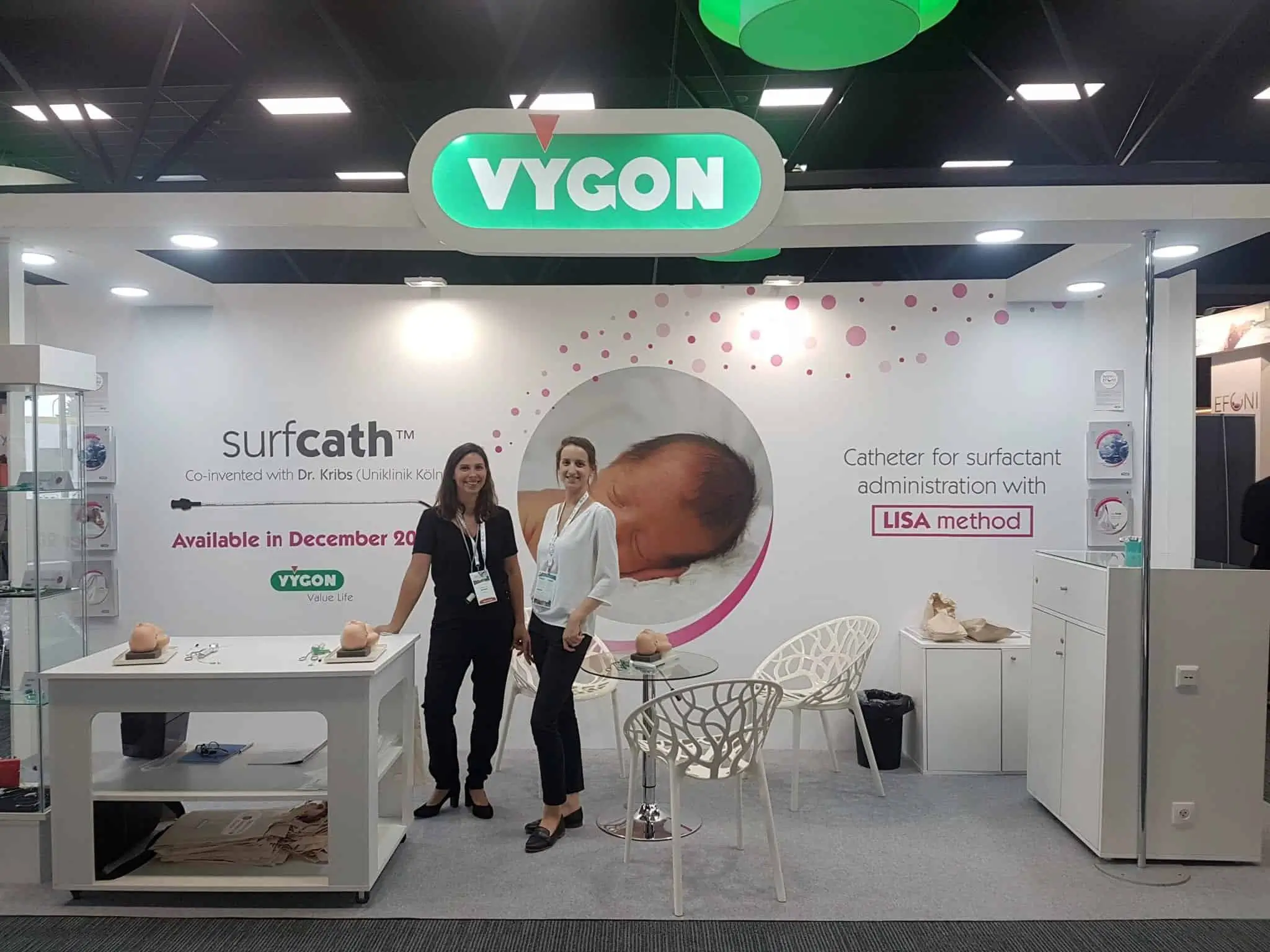24G x 30cm polyurethane, x-ray opaque double lumen central venous catheter with integral fixing wing, extension tubes with markings at every 1cm, Nutriline Twinflo is a 2Fr polyurethane double lumen central venous catheter for premature babies and neonates inserted in a peripheral vein (basilic, cephalic, saphena…).
It is particularly recommended for medium and long-term IV therapies (up to 4 weeks) and for the simultaneous administration of incompatible drugs.
Nutriline Twinflo is inserted through a 20G peelable plastic cannula (Microflash), the needle of which features a lateral eye to quickly visualize blood reflux after successful cannulation of the vein. The peelable cannula is totally removed after catheter placement.
For the stabilization of the catheter, Nutriline Twinflo is supplied with Grip-Lok device with hypoallergenic adhesive specially designed for Neonates.
A measuring tape is supplied for the user to measure the length of catheter to insert from the puncture site to the lower third of the superior vena cava.
Product benefits:
– Double-lumen: allows simultaneous administration of incompatible drugs or solutions. Prevents trauma linked to repeated punctures.
– Catheter taper at the proximal end to minimize the risk of kinking at the junction with the fixation wings.
– Extension tubes with clamps and colour-coded hubs to easily differentiate each lumen.

